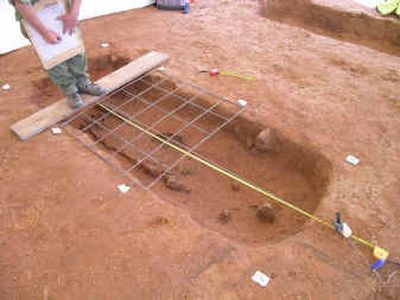Viking graveyard rich in artifacts

A metal-detecting enthusiast wandering on a farm in northwestern England has unearthed a rare Viking graveyard, probably dating from the early 10th century, that was the final resting place of four warriors and two women.
Although the bones of the Vikings long ago were destroyed by the highly acidic soil, the six graves have yielded swords, spears, jewelry, spurs and a possible horse harness – the richest trove of artifacts ever found in England.
The finds suggest that these Vikings were not the fierce seafarers depicted in Norse legends, but high-status settlers who seemed to straddle the pagan and Christian worlds.
“This gives us our first chance to excavate graves from this period under modern archaeological conditions,” said Alan Lupton of Oxford Archaeology North, a private company engaged by the government-sponsored English Heritage to explore the site.
A larger Viking graveyard at Repton held 240 bodies, but was hastily dug on a battlefield, Lupton said. And another site in Derbyshire County, in the country’s Midlands, holds the remains of cremated warriors, but few artifacts. The new cemetery in Cumwhitton, Cumbria, in contrast, is a better-planned site and contains a richer trove of artifacts.
The bodies were buried in the east-west alignment typical of Christian burials of the period, but they were accompanied by all the grave goods they would need for a pagan afterlife. The women had rich brooches, ornate belt fittings and bracelets of highly polished jet, a highly prized form of stone.
In addition to the men’s weapons, spurs and bridles, one had a drinking horn for feasting in the afterlife.
Archaeologists always have assumed that the Vikings inhabited this region of England because many place names are similar to those found in Norse countries, said Elisabeth Ward, a University of California, Berkeley, anthropologist. “It is very nice to have archaeological support for that conclusion,” she added.
There is no evidence of any Viking settlement near the graveyard, Lupton said, but the area has undergone extensive agricultural use that could have destroyed any traces of such settlements.